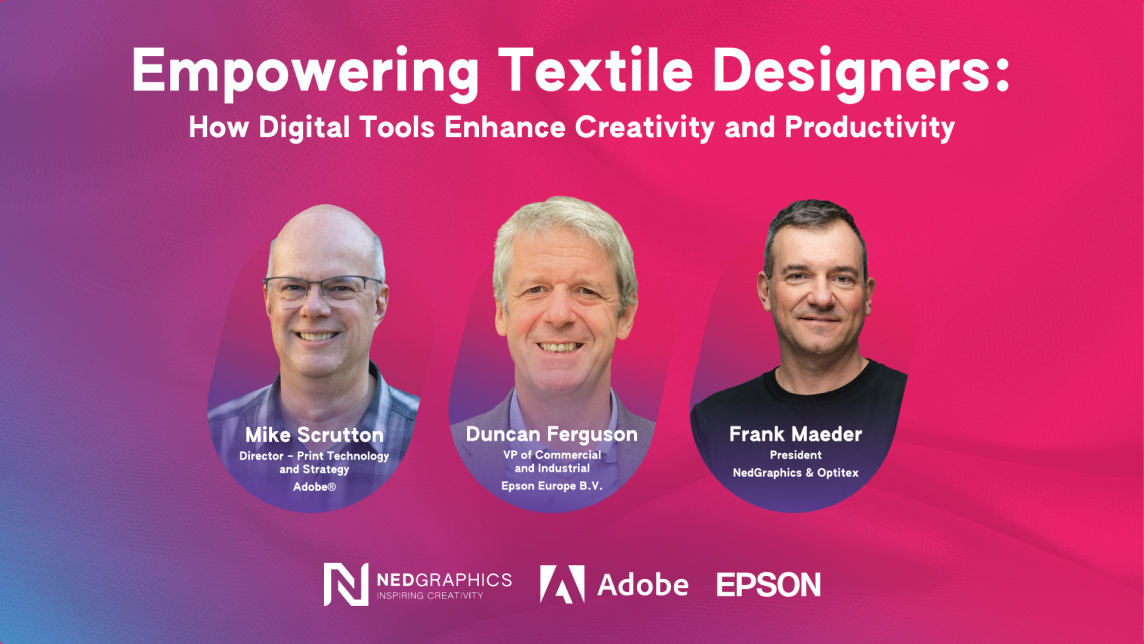
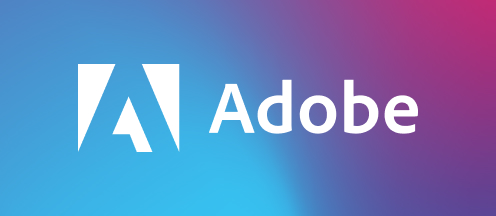
Adobe®, renowned for its creative suite of software, showcased the functionality of its PDF file format and its ease of integration with NedGraphics’ CAD/CAM textile design software solutions for editing and preparation, culminating in Epson’s advanced color management and printing technology as the final step in the process.
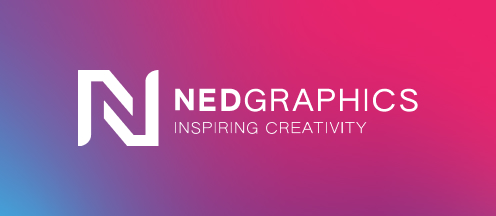
NedGraphics, a leader in CAD/CAM textile design software, highlighted its powerful tools that merge creativity with technology. Their software solutions streamline the entire design process, from initial concept through detailed editing and preparation, ensuring that every design is production-ready and optimized for the highest quality output when it reaches Epson’s printing systems.
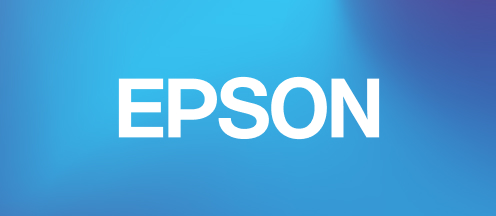
Finally, Epson demonstrated how its spectrophotometer and cloud solution port ensure accurate color measurement and management, creating a seamless workflow from design to final print. Together, these tools provide users with the comprehensive digital resources needed to start and finish their textile design and printing/manufacturing projects.
This focused, one-hour session was tailored for textile printing professionals who aspire to elevate their craft, explore innovative design possibilities, and achieve flawless results with every project. By leveraging the expertise and technologies of Adobe, Epson Europe B.V., and NedGraphics, this webinar offered valuable insights into transforming the textile printing process into a more efficient, creative, and high-quality endeavor.
Having set the stage for the transformative potential of digital textile printing with a key recap of who was involved, it’s time to delve deeper into the insights shared during the webinar. Each segment provided a unique perspective on how advanced digital tools can revolutionize the textile industry.

In a detailed exposition, Mike Scrutton from Adobe underscored the pivotal role that PDF files play in modern textile workflows, positioning them as an essential component in achieving seamless, end-to-end processes. His presentation highlighted the multifaceted benefits of using PDF files, which are not only robust and versatile but also integral to maintaining the integrity and scalability of textile designs from conception to production.
Among the key advantages of Adobe PDF file format is their capacity to preserve the original design elements without any quality degradation in this file type. In textile design, where even small errors can result in major differences in the final product, which could therefore result in tons of wasted materials, this preservation is important.
Whether direct-to-garment, roll-to-roll, or cut-and-sew techniques, Mike gave striking examples proving how PDF files guarantee consistent design replication across several printing techniques. PDF files guarantee that the designer’s vision is accurately replicated independent of the printing method used by keeping all vector information, color profiles, and layout characteristics.
Moreover, PDF files are inherently scalable, making them ideal for textile applications where designs need to be reproduced at different sizes without compromising on quality. Whether it’s a small swatch or a large fabric roll, PDF files maintain the integrity of the design and color fidelity, ensuring that every piece is consistent and true to the original artwork.
Mike’s presentation about the Adobe PDF file format highlighted the indispensable role of PDF files in textile workflows. By ensuring the preservation of design integrity and offering superior color management and scalability, PDF files empower designers and manufacturers to produce high-quality textiles that accurately reflect the original creative vision.

In his own compelling segment, Frank Maeder followed up the Adobe presentation by delving into the symbiotic relationship between creativity and technology, positioning NedGraphics as the best textile design software in the textile industry. Frank explained how NedGraphics’ advanced CAD/CAM software solutions not only enable, but empower designers and manufacturers to push the boundaries of textile design while maintaining efficiency and sustainability.
Frank highlighted its pivotal role across various segments including home furnishings, apparel, and technical textiles like airbags. The software solutions offered by NedGraphics cover a wide array of production techniques, from printed fabrics to woven and tufted textiles, ensuring comprehensive support for the entire textile manufacturing process.
At the heart of NedGraphics’ offerings is a suite of tools designed to enhance creative freedom and boost productivity. Frank emphasized the significance of NedGraphics drawing and color tools that are part of their Creative Design Solutions, which provide designers with unparalleled flexibility to experiment and innovate. These tools are pivotal in translating artistic vision into tangible products without compromising on the intricacy of designs.
Beyond creativity, NedGraphics places a strong emphasis on productivity. Frank highlighted how NedGraphics software integrates process automation, enabling designers and manufacturers to streamline their workflows. This integration reduces the time and effort required to bring designs from the conceptual stage to production-ready formats, allowing professionals to focus more on creative development rather than logistical challenges. The ability to connect with third-party tools further enhances workflow efficiency, making it possible to automate repetitive tasks and minimize human error.
Sustainability has become a cornerstone of modern textile manufacturing, and NedGraphics is at the forefront of this movement. Frank discussed the company’s initiatives aimed at reducing material waste and supporting virtual sampling. These efforts are crucial in an industry often criticized for its environmental impact. By leveraging digital tools, NedGraphics helps manufacturers avoid unnecessary production runs and physical sampling, thus conserving resources and minimizing waste.
Moreover, the role of digital tools in promoting sustainable textile production cannot be overstated. NedGraphics’ solutions enable precise design and production planning, which helps in optimizing the use of materials and reducing offcuts. The software’s capability to simulate fabric behavior and appearance digitally means that designers can make informed decisions without the need for physical prototypes, their recent merger with Optitex is another great example of how NedGraphics is furthering this initiative. The ‘digital-first’ approach not only accelerates the design process but also aligns with global sustainability goals by significantly cutting down on waste and energy consumption.
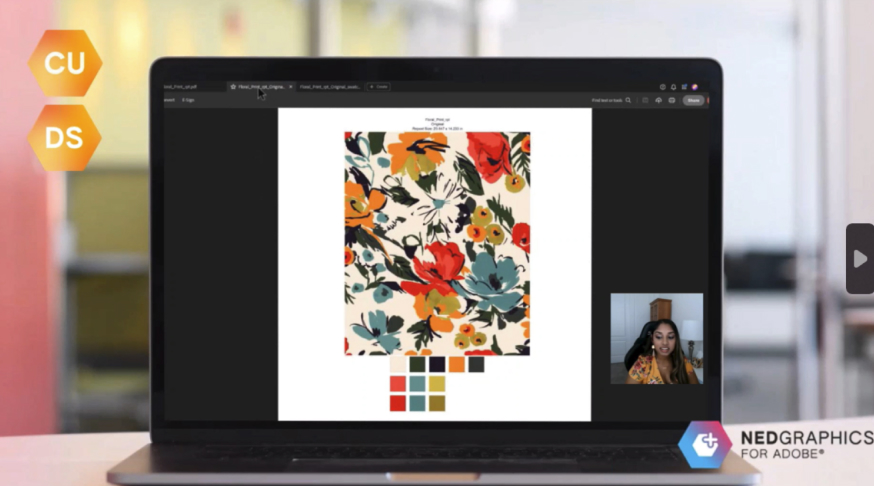
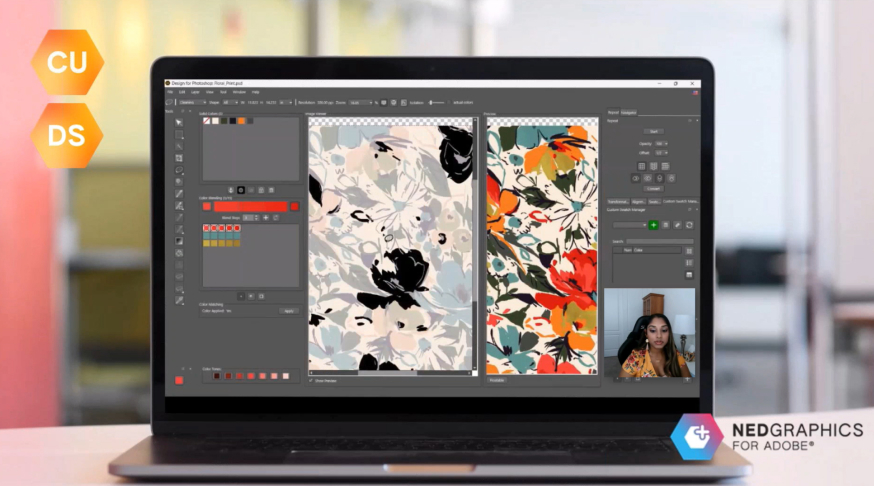
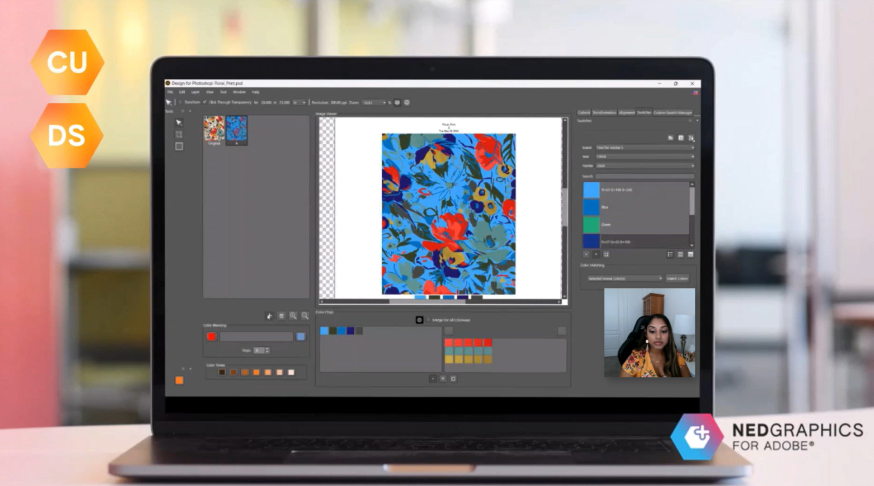
Caroline Smith, a designer and software specialist from NedGraphics, provided an insightful demonstration on how the NedGraphics plugins for Adobe Creative Cloud significantly streamline the textile production workflow.
A key part of Caroline’s demonstration focused on the creation and management of color palettes using the Palette Manager and Color Chart plugins. She showcased how designers can build and manage palettes by adding Pantones and color chips from existing ASC palettes or extracting colors from images with the eyedropper tool. These palettes can then be exported into a color chart for presentations and utilized across both Photoshop® and Illustrator®, ensuring consistency and efficiency in the design process.
She expanded into the practicalities of editing scanned artwork and applying color palettes within Photoshop, showcasing how designers can launch designs using PSD or PSB files and utilize the plugins’ advanced tools for cleaning stray pixels, adjusting motifs, and managing repeat patterns. Features like the cleaning brush, lasso, and lock tools simplify the editing process and enhance precision.
Additionally, she demonstrated the process of building and exporting colorways using the colors tab, allowing designers to create multiple colorways and templates for presentation and proofing.
The plugins offer customization options for displaying information such as repeat sizes, titles, and color codes. Once finalized, colorways can be exported in various formats, including PDF files, briefing tiles, cab production sheets, and color separations, ensuring designs are ready for production, saving time, and reducing errors.
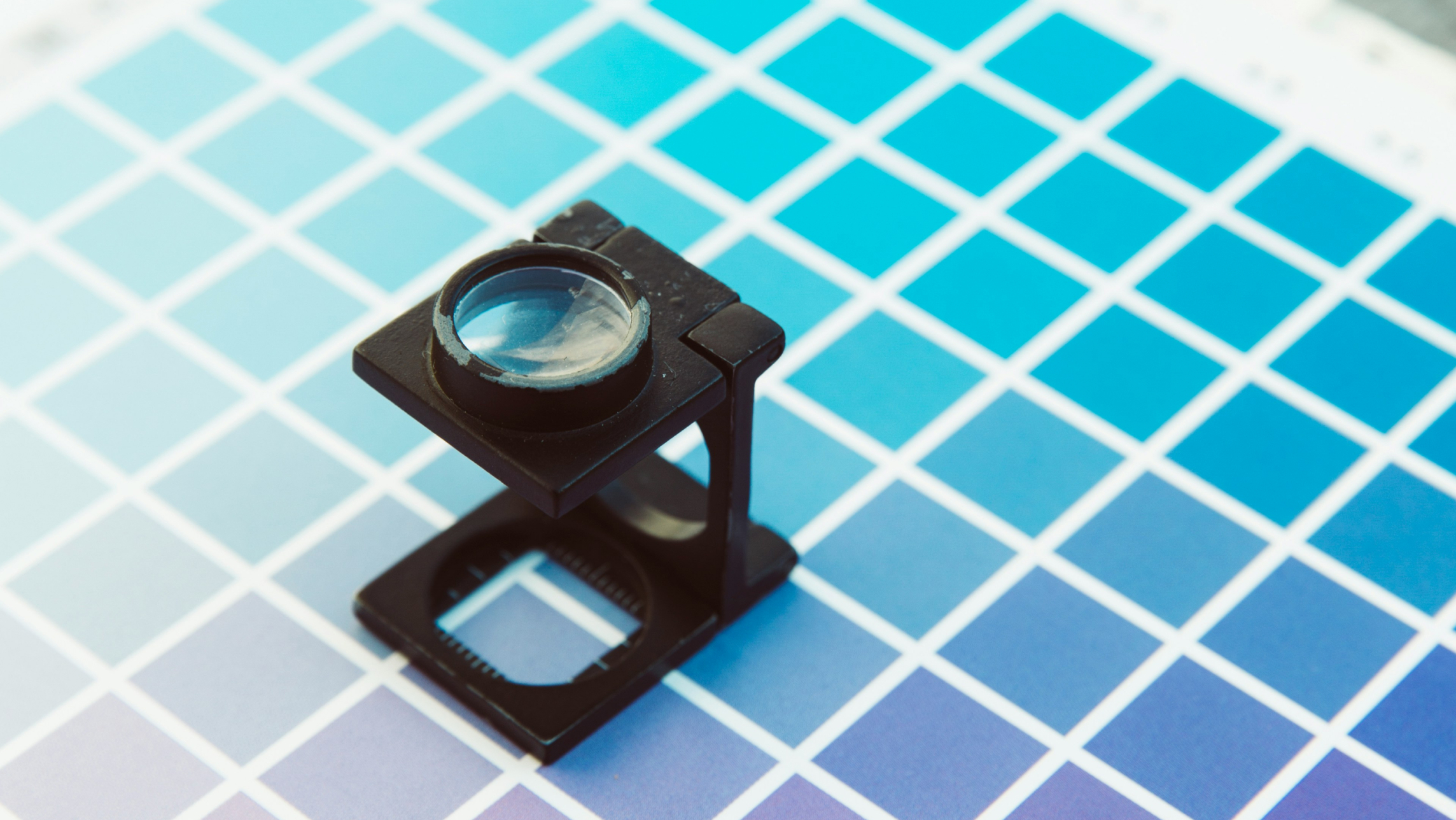
Caroline concluded her demonstration by showcasing the seamless integration of these tools with advanced printing systems, particularly for Epson. This naturally transitioned into Duncan’s presentation, which emphasized Epson’s crucial role in the textile printing industry and the synergy of its advanced printing technologies with Adobe and NedGraphics tools.
Duncan stressed the importance of exact color management and measurement. Epson’s spectrophotometer was showcased as a key tool for designers, allowing them to capture precise color values from any material. This device ensures that the colors envisioned by designers can be faithfully reproduced in the final product.
The integration of color data is facilitated through the Epson Cloud Solution Port, a portal that enables the seamless transfer of color information between different technologies and partners. This ensures that color consistency is maintained throughout the entire production process, from design to final print.
Epson’s advanced printing technologies were another focal point of Duncan’s presentation. He highlighted the benefits of the Epson Edge Color and Edge Print solutions, which are designed to deliver superior print quality while minimizing common printing issues such as banding and graininess. These solutions ensure that every print is consistent and true to the original design, providing designers and manufacturers with the confidence that their products will meet the highest standards of quality.
Duncan also discussed Epson’s commitment to sustainability in textile production. He emphasized the company’s efforts to reduce waste through localized and distributed printing, an approach that not only minimizes environmental impact but also supports more efficient production workflows.
By enabling smaller, localized production runs, Epson helps reduce the excess inventory and waste commonly associated with traditional textile manufacturing. This approach aligns with global sustainability goals and demonstrates Epson’s leadership in promoting environmentally responsible practices within the industry. Epson is helping to transform textile printing into a more efficient, reliable, and environmentally friendly process.

Through and through, this webinar underscored the transformative power of digital tools from Adobe, NedGraphics, and Epson in the textile industry.
Mike Scrutton highlighted the critical role of PDF files in maintaining design integrity and ensuring color accuracy. Frank then demonstrated how NedGraphics’ advanced CAD/CAM solutions merge creativity with technology, enhancing both creative freedom and productivity. Caroline followed up by giving us a great live demo of NedGraphics software in action, illustrating the practical benefits of their plugins for Adobe Creative Cloud and streamlining workflows from palette creation to final production. Finally, Duncan from Epson Europe showcased the essential role of advanced printing technologies in achieving consistent, high-quality prints while promoting sustainability through localized production.
Looking ahead, the potential for further innovations in digital textile printing is vast. As technology continues to evolve, the integration of AI, machine learning, and more advanced color management systems could further enhance design capabilities and production efficiency.
This webinar encouraged textile professionals to adopt new, cutting-edge tools, not only to stay competitive and achieve superior design outcomes, but also to consider the sustainable practices these new technologies offer. By embracing these technologies, designers and manufacturers can look forward to a more streamlined, efficient, and creatively fulfilling workflow.
Thank you for taking the time to read about the transformative potential of digital textile printing and our recap of the “From Sketch to Print: The End-to-End Print Textile Journey” webinar. We encourage you to dive deeper into the advanced tools from Adobe®, NedGraphics, and Epson to revolutionize your design and production workflows.
Don’t hesitate—join our future webinars to stay ahead of the curve and keep abreast of the latest advancements in digital textile printing. Make sure to sign up for our newsletter, and subscribe to our LinkedIn Nexus for additional highlights, and upcoming webinars. If you missed this webinar, you can send us your info by registering here, and we’ll connect with you and send you a video copy of the session. Your journey to enhanced creativity, efficiency, and high-quality production starts here.